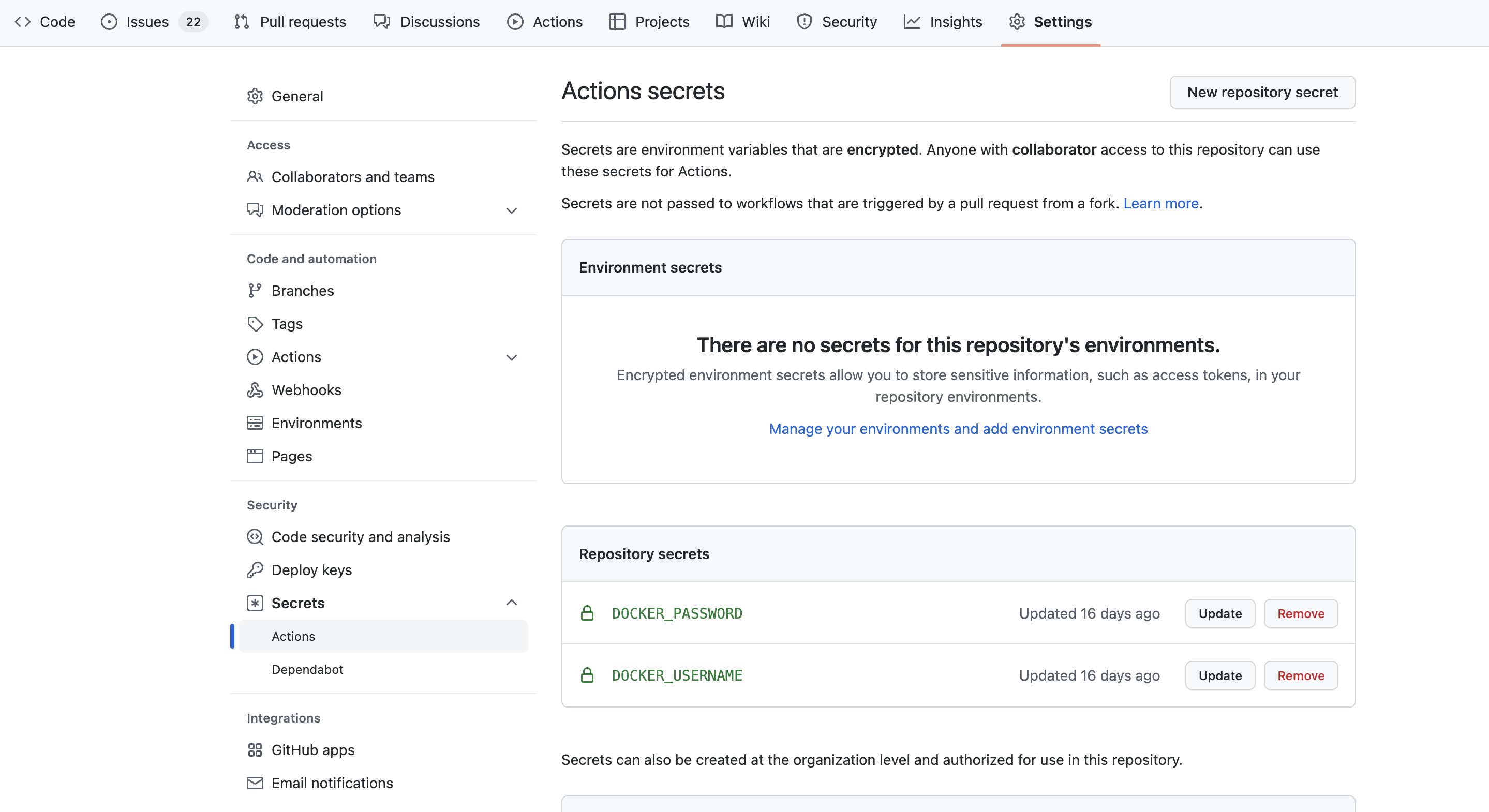I used to redeploy manually via scripts triggered by cron or Airflow. That approach required a machine running 24/7 and only synced on a schedule—not ideal. While researching Jenkins, I stumbled upon 생활코딩’s GitHub Actions video and realized GitHub already provides a lightweight CI/CD solution.
Here’s how I set up a CI pipeline that builds a Spring Boot app, packages it into a Docker image, and pushes to Docker Hub.
What Is GitHub Actions?
GitHub Actions is GitHub’s native CI/CD service. You create YAML workflows under .github/workflows/. GitHub offers starter templates tailored to your repo—check the Actions tab or browse the docs.
Workflow Overview
I wanted the pipeline to trigger on pushes/PRs to master, build the project, and push an updated image. Later, Kubernetes pulls from Docker Hub.
The full workflow is in this gist:
Key sections:
name: gradle and docker
on:
push:
branches: [master]
pull_request:
branches: [master]
on defines when the workflow runs.
jobs:
build:
runs-on: ubuntu-latest
steps:
- uses: actions/checkout@v2
- name: Set up JDK 11
uses: actions/setup-java@v1
with:
java-version: 11
runs-on: provision an Ubuntu runner.actions/checkout@v2: pull the repo.actions/setup-java@v1: install JDK 11.
Docker Hub login & build steps:
Sensitive values (like DOCKER_PASSWORD) come from GitHub Secrets: Repository Settings → Secrets → Actions.

The final step builds the Docker image and pushes it.
Testing
After committing the workflow, GitHub runs it automatically. Future pushes/PRs trigger new runs.

A green check means success. Click through for logs and errors. If something fails, GitHub emails you (if notifications are enabled).
Workflows live under
.github/workflows/; edit them directly in the repo to iterate.
I stopped at CI because I plan to handle CD with Argo CD (I love its dashboard). Stay tuned for a separate post.
Lessons Learned
- Environment variables are scoped per step. Define and use them within the same
runblock, or persist them if needed. I initially tried editing.bashrcinside a step—it doesn’t survive subsequent steps. - When in doubt, cram debugging commands into a single step to keep state.
GitHub Actions turned out to be much simpler than maintaining my own Jenkins or cron-based scripts, and it ties directly to repo activity—exactly what I needed for CI.***